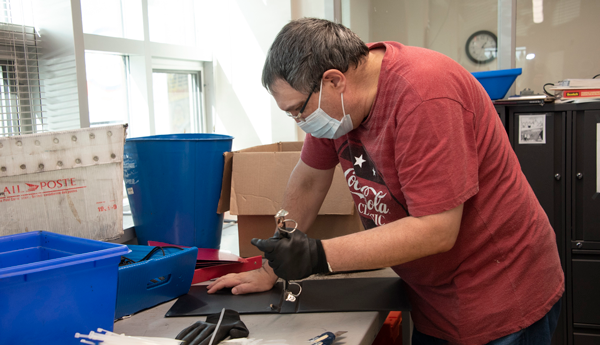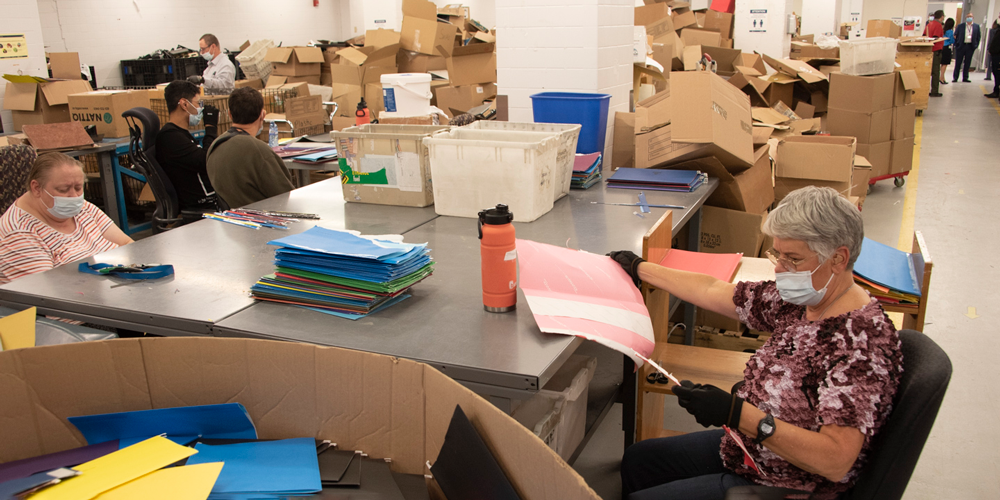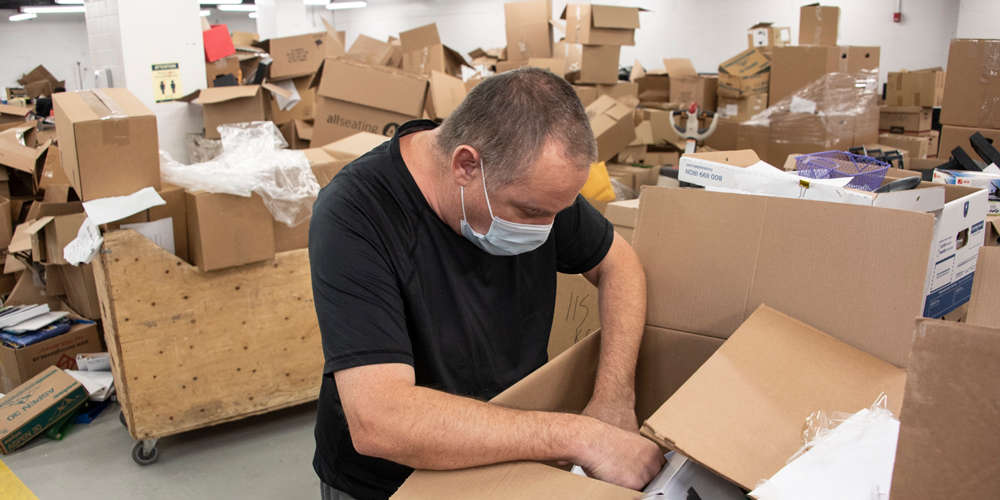Waste Diversion Program: More than paper sorting
The Waste Diversion Program is part of the commitment Public Services and Procurement Canada (PSPC) has to social procurement and government modernization. This program, which revolves around sorting surplus office materials, benefits the Government of Canada and supports greening initiatives while creating employment for people with disabilities.

For over 40 years, the Ottawa-Carleton Association for Persons with Developmental Disabilities has been providing paper-sorting services to different federal departments. Since 2020, the mandate has expanded beyond paper sorting. “Through PSPC’s contract with the association, 20 to 30 workers have been employed to sort materials. The association provides support to persons with developmental disabilities, including finding them employment,” explains Melanie Mayor, Senior Project Officer at PSPC. Her team is also responsible for all aspects related to the collection of the items as well as their final destination, such as non-profit organizations or recycling sites.
Daily, the association’s employees have contributed to saving the planet by sorting, dismantling and recycling surplus PSPC office supplies for the Waste Diversion Program. “By employing persons with developmental disabilities, the program provides social benefits and adds value for the organization, the community and the environment. It provides employment to persons who otherwise might face barriers in the workplace,” says Melanie.

For the employees, the social inclusion aspect of the program is very important. Whether they have been working for the association for 35 years or 1 year, employees like John O’Neil, Johanne Lalonde, Tim Doherty and Lorraine Brady all have their own reasons for enjoying the work that they do. “My favourite thing, it’s joking with the bosses,” says John. “I like everything here,” insists Johanne with a big smile. For Tim, one of the most senior employees, what motivates him is sorting the items. As for Lorraine, she likes dismantling the file folders and “talking to my friends in the cafeteria.”
Step by step
Once the items arrive at PSPC’s warehouse, they are sorted by the association’s employees. Any usable goods are provided a second life. Many of the items collected through the Waste Diversion Program are divested through GCSurplus, the Government of Canada’s service to divest surplus moveable assets to federal departments and to the general public. “We’ve teamed up with GCSurplus on their back-to-school campaign and work very closely with them to ensure that reusable items are given a second life by making them available to Canadians. We’re also working with Computers for Schools Plus, which is an Innovation, Science and Economic Development Canada program, and will be sending binders, staplers, tape dispensers and file folders to their network of schools and charities,” says Melanie.

If the items are not reusable, they are dismantled for recycling. For example, a dismantled binder will have metal, plastic and paper to recycle. To date, the program has a recovery rate of 95%, which represents around 320,000 kilograms of materials repurposed or recycled, or the equivalent volume of 89 school buses of office supplies.
To date, 36 federal departments and agencies have participated in the Waste Diversion Program, many of whom have sent multiple shipments. Currently, the service is only offered in the National Capital Region. “Since the program has been a success, we would like to look into expanding it nationally! In the next year, our team will be performing an analysis of the feasibility of expanding the program to the regions,” adds Melanie.
The Waste Diversion Program is an essential greening service, and it offers employment to people with developmental disabilities, giving them an opportunity to contribute to important work, and to develop a sense of community and engagement.
To discover more articles about PSPC people and projects making a difference in the lives of Canadians, check out Our stories.
Page details
- Date modified: